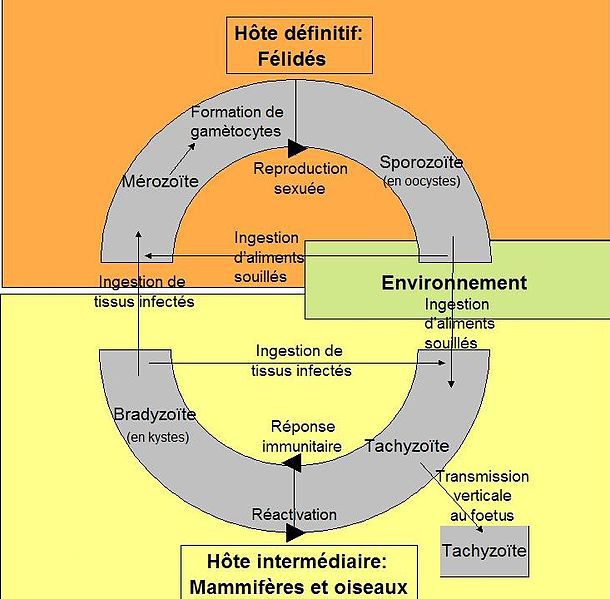-
 Solar energy
Solar energy
-
 Glycerol
Glycerol
-
 Carbonado
Carbonado
-
 Symbian
Symbian
-
 Turbidity
Turbidity
-
 Postpharyngeal gland
Postpharyngeal gland
-
 Hedged farmland
Hedged farmland
-
 Gene
Gene
-
 Liver
Liver
-
 Hydrogen bond
Hydrogen bond
-
 VDSL
VDSL
-
 MMS
MMS
-
 PAVI
PAVI
-
 Weaning
Weaning
-
 Multiple sclerosis
Multiple sclerosis
-
 Nitrosamine
Nitrosamine
-
 Compost
Compost
-
 Actomyosin
Actomyosin
-
 European corn borer
European corn borer
-
 Nuclease
Nuclease
-
 Homo ergaster
Homo ergaster
-
 Ebb
Ebb
-
 Nucleoside
Nucleoside
-
 Dwarf galaxy
Dwarf galaxy
-
 Elixir
Elixir
-
 Trematode
Trematode
-
 Clausius postulate
Clausius postulate
-
 Exosome
Exosome
-
 Coriander
Coriander
-
 Amendment
Amendment
Toxoplasmosis
Toxoplasmosis is a parasitic disease caused by the protozoon Toxoplasma gondii. It mostly infects warm-blooded animals including human beings. Cat species are the obligate hosts . The disease is mild or even asymptomatic in the great majority of cases. A third of the population worldwide is even thought to be infected. However, it is dangerous to the seronegative pregnant woman (a person who does not have antibodies against toxoplasmosis in their blood) as she may transmit the Toxoplasma to her foetus. The resultant toxoplasmosis can even sometimes kill the foetus.
Transmission of toxoplasmosis
Toxoplasmosis is transmitted by cats. The Toxoplasma colonises the cat's small intestine and is excreted in their faeces. The disease only develops if these parasites are ingested. The risk is therefore low and occurs at the time when the cat litter is changed .
Toxoplasmosis in adults
Toxoplasmosis is asymptomatic in the very great majority of cases. Only immunosuppressed people (such as AIDS suffers) are at risk of the effect of a parasite. They can then develop lesions in their eyes, cardiac, respiratory and even nervous systems combined with a fever.
Toxoplasmosis during pregnancy
Toxoplasmosis is transmitted from the mother to the child across the placenta, only if the mother is seronegative (if she does not have antibodies against the parasite). The risk of transmission increases during the pregnancy and reaches a peak after 36 weeks of gestation. On the other hand, the later the foetus is infected the less severe the infection is. During pregnancy:
- the infection occurs during the first trimester of pregnancy, it may result in the foetus dying either at that time or in the first months of life after birth. The babies that survive can suffer many neurological problems, particularly psychomotor retardation;
- if the infection occurs during the second trimester, central nervous system problems are less likely;
- if infection occurs during the third trimester of pregnancy the risks are only ophthalmological with pigmented chorioretinitis (abnormal pigmentation in the retina). In 80% of cases the baby has no signs at birth although symptoms may develop throughout childhood and even in adolescence. Long term monitoring is therefore needed.
 During the life cycle of the toxoplasmosis vector in passes through several phases and changes host before obligate infection of a cat species. © Powch, Wikipedia, cc by sa 3.0
During the life cycle of the toxoplasmosis vector in passes through several phases and changes host before obligate infection of a cat species. © Powch, Wikipedia, cc by sa 3.0
Latest
Fill out my online form.



